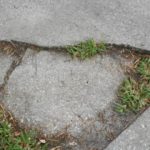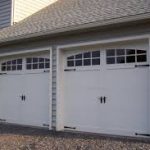Old-school ribbed or flexible ducts are a bad idea. Flex hose can tear on nails or become compressed, kinked, or bent. It’s also dangerous : in dryer exhaust ducts, lint can collect inside the ribbing and cause a fire.
The best exhaust paths are made using solid, smooth ducting. Ideally, you want metal ducting that vents directly to the outside in as short and straight a run as possible. That way, the fan will work efficiently. If the exhaust duct has to make a lot of turns or go a long distance, you may need a fan with a larger capacity. I ducts run through unheated spaces, make sure the ducts are insulated and securely sealed at every seam. Without this, the cold air surrounding the ductwork will cause condensation and leaks.
Clothes dryer have an exhaust duct that lets the warm, moist air and lint from the dryer escape to the outside of the home (never vent it into an attic or crawl space –guaranteed mold and damage). The problem is the exhaust duct gets clogged. The lever of clogging varies between types of dryers and manufacturers, and depends on how often the duct is cleaned. (You do clean your dryer exhaust duct, right? I recommend it at least once a year) If your get a blockage, you’ve got a risky situation. When hot exhaust passes through a duct caked with all those bits of lint, it could end up triggering a house fire.
The other issue is lint gets past the dryer screen and gets caked on the inside of a dryer’s exhaust and flex tubes. Fabric softeners, dryer sheets, and anti-static products can make the problem even worse. The lint buildup reduces the performance and efficiency of your dryer–which means you’re paying more for it to work less effectively — and you’re increasing the risk of a lint fire. Do yourself and your family a big favor and use smooth, rigid metal ducting. Don’t connect it with screws because they poke through on the inside and catch lint.

